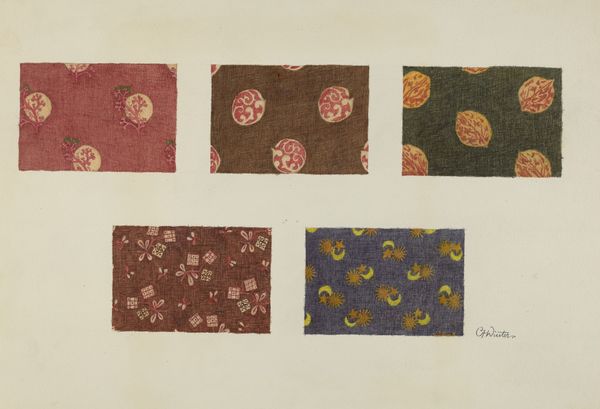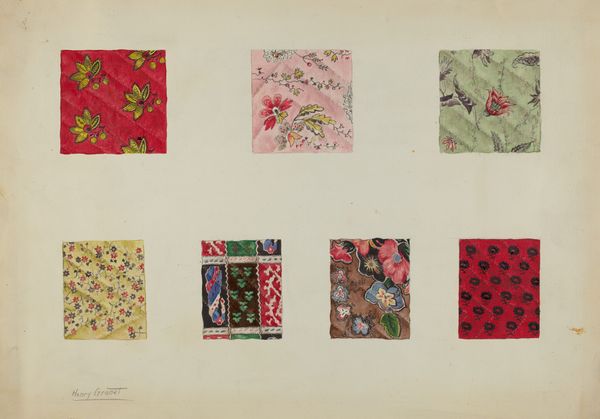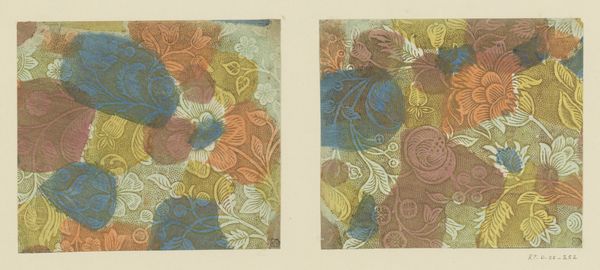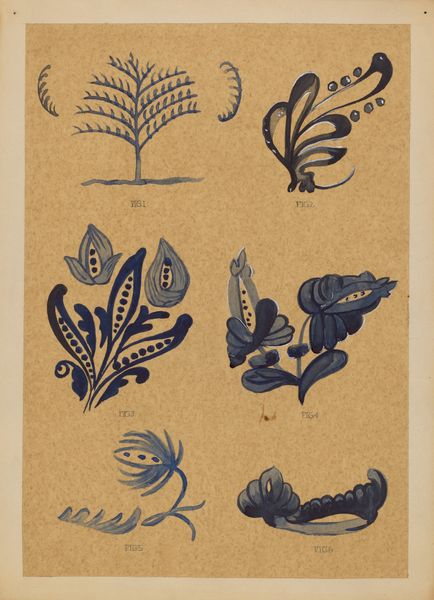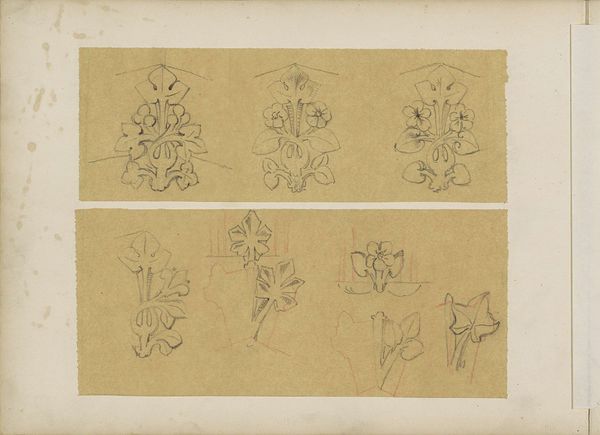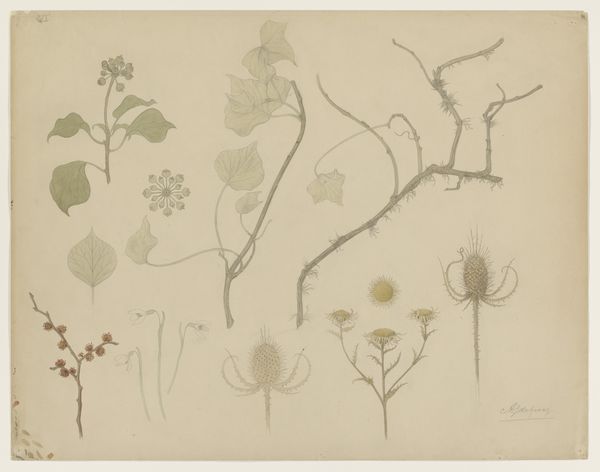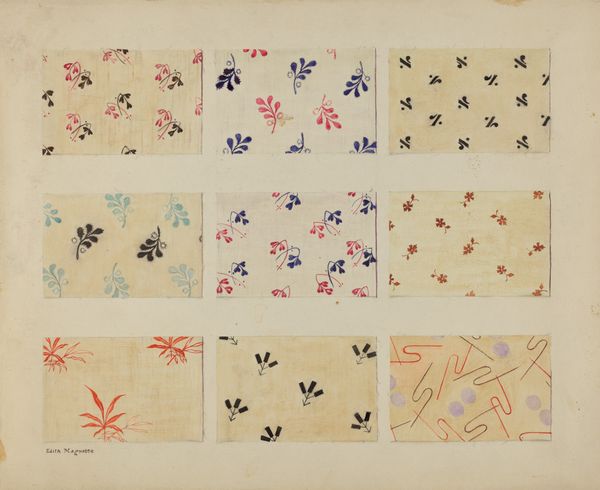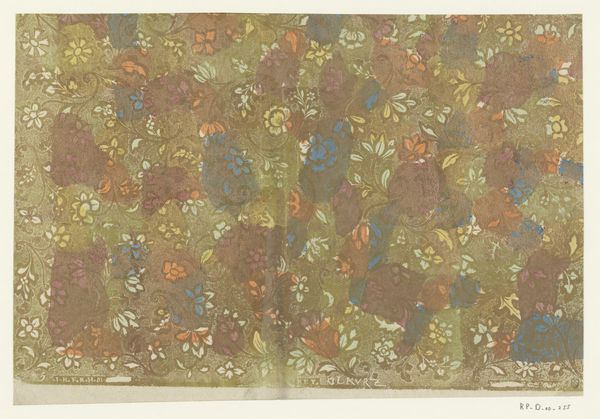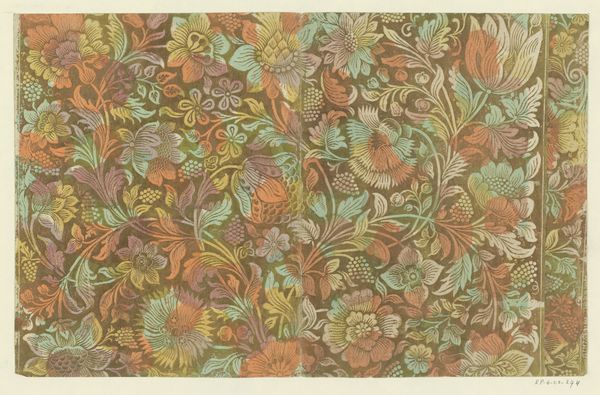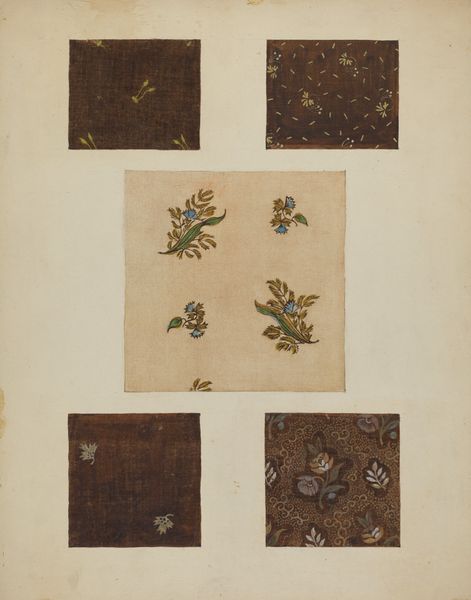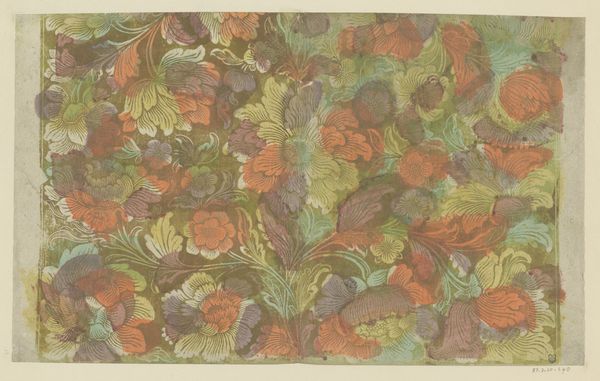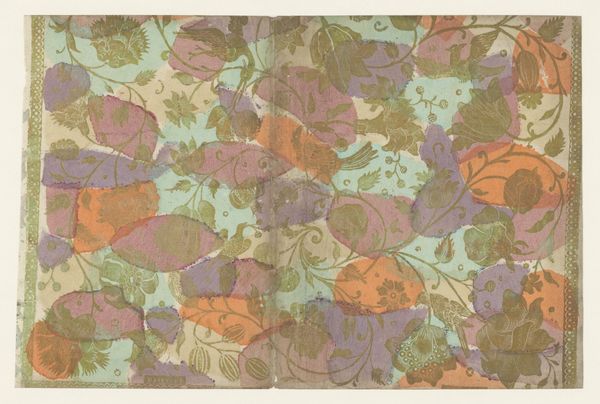
drawing, textile, paper, watercolor
#
art-deco
#
drawing
#
textile
#
paper
#
watercolor
#
decorative-art
Dimensions: overall: 22.5 x 30.4 cm (8 7/8 x 11 15/16 in.)
Copyright: National Gallery of Art: CC0 1.0
Curator: Here we have "Printed Textiles," a c. 1936 watercolor, textile, and drawing on paper by Suzanne Roy. Editor: What strikes me immediately is this tension between vibrancy and restraint. The botanical motifs are rendered in such saturated blues and reds, but the muted backdrop seems to pull them back. Curator: It’s interesting to consider this as a commercial piece; textile design really comes down to balancing aesthetic appeal with practical considerations of production, wouldn't you say? The materials employed would affect both the cost and durability. Watercolor allows for precise renderings, but how does that translate onto fabric, and what kinds of dyes and printing processes would have been viable then? Editor: Right, the commercial aspect! And yes, these flowers, some I don’t recognize, aren’t just decoration; they carry layers of symbolic weight, even in 1936. The choice of blooms, the arrangement, each speaks to an intended market. Those dark red flowers, are they carnations, perhaps? Carnations had a complicated Victorian history of love, fascination, or refusal… What emotional story is embedded here? Curator: Precisely. Looking closely at the paper, you can see where she’s layered the watercolor to build up those deeper tones. Each layer requiring time and consideration. Time and consideration someone would have had to pay for. This contrasts sharply with machine-printed textiles becoming commonplace in the early 20th century and calls to mind earlier hand-crafted modes of textile creation. I am interested in how Roy navigated a space that was once artisanal but being pushed into something mechanized and manufactured on a grander scale. Editor: Absolutely, and that brown wash background? Is it intentionally aged or antiqued? Because in some ways that adds a kind of depth but equally feels modern when viewed in today's lens. A longing for nature and naturalism perhaps during that pre-war period. These motifs could mean a deliberate yearning for something permanent, or classically beautiful, even. Curator: I find it compelling to examine how Roy negotiates both artistic expression and mass appeal given her design was always destined for practical purposes in peoples homes. Editor: And ultimately those purposes reflect something deeper about our cultural memory. Suzanne Roy's textile patterns provide such fascinating food for thought regarding meaning behind beauty!
Comments
No comments
Be the first to comment and join the conversation on the ultimate creative platform.
